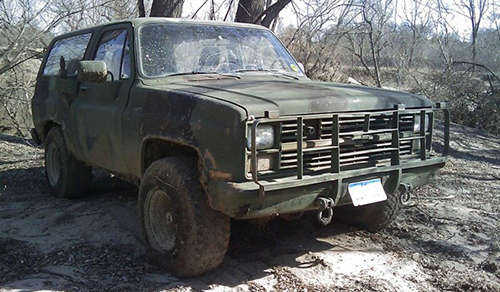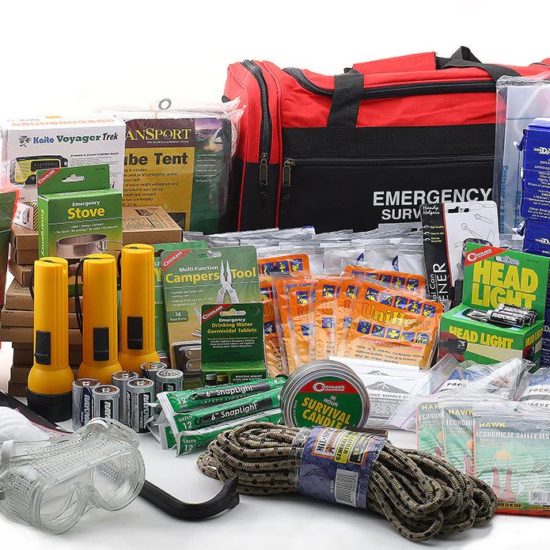
I love modern technology, particularly the electronics that allow me to communicate so quickly and easily. Even so, the loss of that capability – for whatever reason it’s lost – doesn’t have to be entirely devastating. We communicate not only without our electronics, but without noise all the time.
I tap my wrist, hold up my hand with my fingers splayed. Across a room, instantly, I’ve told someone they have five minutes, or that I need/want five minutes. I tap beside my eyes, point in a general direction, and then point lower or higher in an aisle of a store. It tells somebody at the other end that I found what we’re looking for, or that I want them to look at something, and then where more specifically that something is.
We do it nearly instinctively, some of us more than others. While hand gestures especially change meaning culture to culture, the ability to communicate without speaking is inherent to our species. It has been since before the first cave painting.
Recently the topic of communication without radios came up. The possible reasons for a non-radio life are pretty varied – a generator or solar panels with significant damage, low winter light, extended-time crisis when even rechargeable batteries are exhausted, seasons and locations when it’s hard to get messages through, EMPs and solar storms, neighbors who have the skills to survive but don’t have the same EMP-proof stockpiles we do, newer homesteaders and preppers who can survive but haven’t moved into serious “thrive” supplies yet.
There are also times we want to communicate, but don’t necessarily want to be heard. Hunting and tactical reasons are two of those.
History and modern technology have given us a lot of options to work around those possibilities and needs. Here are a few.
Morse
Morse code can be applied to a lot of communication options. While it’s primarily associated with radios, it was once a common ship-to-ship and ship-to-shore communication method using light instead.
Navy signalman using Morse –
It wasn’t until I started looking for an image online that I realized how dependent people are on the blinker-clicker features of their flashlights for light-transmitted Morse. If you have a milspec light that can take that abuse, great.
If not, cover and uncover your flashlight with your hand. It’s still fast and easy.
For some of us with broken and aging fingers, and for people who are turning their lights on and off to get the same effect, it’s not only actually easier, sometimes faster, it’s also going to save your light a lot of wear and tear.
You can use a laser pointer for it as well, or cover and uncover a battery-candle-oil lantern with a box (or an oatmeal tub, coffee can, small ones with your hand).
Containing Light
Light stands out like it’s cool at night. Even a little green-red-blue laser light. It travels a long way when it’s dark-dark.
If you’re only trying to not stand out to everybody with one of those insane fifty-yard beams and you’re working from a set, expected position, you can signal by flashing the laser light or a flashlight into your palm or onto your chest, onto a tree or certain wall that’s visible from another location but not most of the property.
If you anticipate the need to really not be seen by anybody but your LOS partner, carry a flattened toilet paper roll wrapped around your small flashlight. (Flattened but tube, not sliced.)
When you’re ready to send a message back to the house, to the other side of a building, along the length of a wall, or down a roadway, cup the tube in one hand so you’re blocking the back, and stick the front of the light just inside it. Or, hold a laser sight/pointer just outside it.
The roll contains the light, so only somebody facing you sees it. If you want, add a mirror or a white disk to the palm to make it a little easier for that person to see.
I pretty much prefer those two general methods, regardless, because you stand a really good chance of blinding the person you’re trying to signal, or at least giving them dots in the eyes, especially with a pointer.
Ship Flags
The sea services have been using specific flags to communicate since some of the earliest days, from pirates warning about trying to run from them, warning others that illnesses are aboard, to requesting assistance. This site has a list of international signal flags, their phonetic name, and the navy/maritime meanings.
The phonetic name becomes valuable, because some of the meanings at sea translate directly or with minor modification to things we face on land, too. The Morse, semaphore, or ASL of the phonetic name can be flashed or signed to convey a whole thought or message, just as a flag would.
The flags can be made – painted on boards or drawn on cards to use in windows or to be flashed, or drawn in chalk on a wall or sidewalk as needed. It doesn’t have to be fabric, or flying in the air.
Any flag, banner, or windsock at all can be part of group and neighbor communication.
If we all normally fly the local team’s colors, but somebody puts it at half-mast or upside down, they could be saying they need help – or they’re ready for harvest/planting assistance. One person with a weather station might say rain, so a blue banner goes up. A black cross on yellow might mean a woman went into labor and the local sheep keeper would be welcome as a midwife. A black dot might mean there’s sickness – don’t come calling.
A flag might also just mean all’s well here, and a quick snip to drop it on the way past alerts all the rest that the gunfire wasn’t practice, it’s real, or that there’s a fire-fire, not burning waste or smoking out bees.
We can get as creative or simple as we want.

Semaphore Flagging
Another powerful tool in the box for sending messages visually, with the same alpha-numeric capabilities of Morse, is semaphore signaling – that signalman out there with the two bright flags or cone lights. Semaphore flag signaling was also once done using a single flag in just four positions (you can find it called wigwag signaling as well).

With two flags, there are fewer combinations to remember, but you also have to have two flags – and hands – available. For both, a larger line-of-sight space is required so the flags can be seen.
Established Shorthand Codes
Radio Q codes and 10 codes have a lot of value for quickly sending messages.
Various established codes provide shorthand communication for “Suspicious vehicle” (10-37), “your keying is hosed and hit every branch of the ugly tree on its way down” (QSD), “Report to [location]” (10-25), “stand by” (QRX), and “Be super-duper quiet” (“Do not use siren or flashers”) (10-40).
Those are all phrases we might use, from communicating across a yard or across a farm, as a simple survivor with a neighbor or family, or as a group with defensive and patrol forces. 10-codes especially have a lot of preexisting elements that are of use in many situations.

They can be transmitted with clicks, whistles, a pipe smacked with a hammer, marker on a dry erase board, flashed/blinker lights, or using semaphore flag(s) and hand signals.
We can also easily modify or truncate existing codes.
“QRO” (are you troubled by static noise) can become “do you hear anything”.
10-81 (breathalyzer report) becomes “just a drunk”.
10-90 (bank alarm) can become a prefacing code for an audio or visual alarm, with the location following it.
As with cop and amateur radio codes, there are hospital codes that can apply or be readily modified to fit life without radio communication. Heavy equipment operators and divers also have signals we can steal and modify. Knowing the common motorcyclist signals can be applied to daily life as well as serious disasters.
Military Hand Signals
Whether we’re ever planning to clear a house or a yard with another person or not, military and police hand signals also have applications for many situations. The numbers alone are useful. There are also action-information signals that are pretty handy.
The difference between “stop” and “freeze” gets used with my dumb dog 20 and 200 feet from our house with some regularity. I prefer to just go extract her or the ball from my pots and planters, but sometimes I just want her to stay generally where she is while a car passes. “Go back” translates to “out/away” in our world – I want her to back away from me, usually while I’m playing with sharp things or might squish her.
 I originally thought it was just my quirky father telling dogs, the rest of the family, and hunting buddies that we were going to the vehicle with his “steering wheel” gesture. For a while I though the military had stolen the “down” signal from hunters with dogs.
I originally thought it was just my quirky father telling dogs, the rest of the family, and hunting buddies that we were going to the vehicle with his “steering wheel” gesture. For a while I though the military had stolen the “down” signal from hunters with dogs.
Turned out, not so much. He just modified them from his military days.
Even without need for silence, it’s just really easy to whistle or clap a hand once, tap a window, ring a triangle, and then make a quick gesture, as opposed to shouting fifteen times or hiking out to somebody.
The gestures themselves are rooted in military hand signals we each learned (decades apart). In most of my lifetime’s applications of them, they’ve had no military bearing at all. But like the ability to say “I love you” a last time from a window, or immediately flag a distress signal in a boating-savvy community, they entered into our world and stayed in use.
ASL
American sign language has some of the same benefits as the everyday-everyone useful military signals. There are a world’s worth of truncated single-gesture shorthand signs, for everything from “man” or “female child” to “taking lunch”. Deaf-mute people are able to hold the same sophisticated conversation as speaking and hearing folks. The addition of spelling and broader concepts to military hand signals allows ASL signers to be more specific across even distance, silently.
It’s also just a handy skill to have and might increase your employability when you stick it on a resume.
Written Word
As with flags and hand signals, we can take cues from history and modern eras with leaving drawn symbols – or flashing cards and posters – as well.
Here’s a fairly comprehensive listing of WWII symbols. It wouldn’t be completely crazy talk to go with another nation’s symbols, such as German or Russian, if you want to keep the information a little more segmented, although there tends to be a lot of commonality.
The old hobo symbols can be a little tricky. I can think of three or four for “safe water” alone. It also means adjusting from “black spot of death” and “X marks the spot” to slashes and X’s are bad, and dots are good.
However, from “dangerous man” and “vicious dogs” to “rickety bridge” or “avoid this in rain”, there are many apply, whether we’re planning on a community, thinking “Kilroy” situations, or just making notes for family or a core group.
The symbols also allow us to quickly and easily annotate our own maps for areas of concern or resources.

Limitations
The limitation to all of these is line of sight. But in some to many cases, being able to communicate even from a driveway to the house, the length of a hall, or stacked in a ditch, without making noise or taking a lot of time, makes them worth considering. There’s a good reason many of them have never faded from use, even with today’s technology.
If you want to communicate at range in the dark, you’ll need flashlights or pointers, (or oil-candle lanterns if your non-radio needs are expected due to long-duration interruptions in shipping). For us, that’s balanced, because we have lights on us, almost always, but not always a cell signal and not always a radio. That might not hold true for everyone.
Hand and flag signals are limited in range, while light carries longer distance. However, blinker-light comms is only really reliable at night. I may be able to use red boards, car windshield heat reflectors, or white flags to increase range in the daytime.
The number-one piece of gear for longer-distance communication without electronics is going to be binoculars or a scope.
Day or night, if I can’t see what you’re sending, clearly, we have delays or miscommunication. They’re inexpensive enough and should be part of most preparedness closets anyway.
If you’re mostly in brush country and are only talking about distances of double-digit yards, don’t break the bank there – there are more important things. If you’re looking at using blinker lights and somebody climbing a windmill or water tower daily or weekly to do a neighborhood-town flag check, a simple scope should work.
It’s also a lot to learn.
Instead of planning to use all of them, maybe take notes, print guides, but cherry pick. The very basic hand signals (heard, saw, numbers, armed or unarmed, child, adult, animal, danger, recover/relax, say again) and basic Morse code would take priority. 10 and Q codes can be added on. A few flags or graphics to represent ideas or situations follow.
Radio Silence Backups
The point is not to discourage anyone with fifty-five million more things to learn or buy. It’s that we have lots of options even if electronics-driven communication becomes unavailable. With any luck, there are some ideas here that can add some resiliency and redundancy to existing plans.
And, since a lot of it is learning based, not resource based, non-radio comms can be a way to improve preparedness with free-inexpensive skill building while saving up for purchases.




























